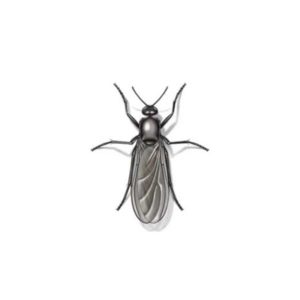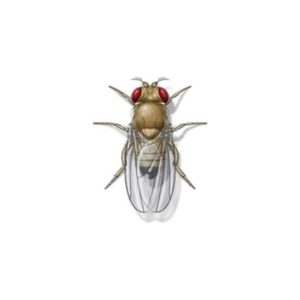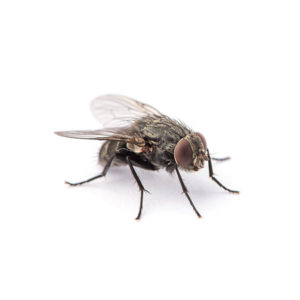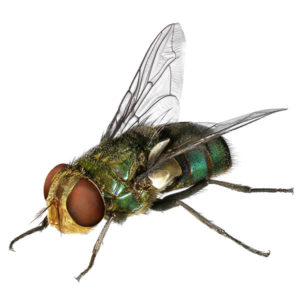Lovebugs Plecia nearctica, also known as honeymoon flies or kissybugs, are a fascinating yet sometimes frustrating insect species. These small black flies are easily recognizable due to their distinctive mating habits and swarm behavior. Although they are not typically harmful to humans or animals, lovebugs can cause problems in large numbers, especially when they cover windshields and vehicles. Read on for everything you need to know about lovebugs, including their appearance, life cycle, behaviors, and how to handle an infestation.
Lovebugs in Florida
Florida is home to many lovebugs, especially in the spring and fall. These insects like the state’s warm, humid weather and plants, which make it a perfect place for them to live. Even though they aren’t originally from Florida, lovebugs now thrive here and are common across the Gulf Coast and parts of South Carolina.
During lovebug season, Florida also sees an increase in deer flies and yellow flies. These insects are active in the warmer months and can be very annoying. Unlike lovebugs, which don’t bite, Deer Flies and Yellow Flies can bite and leave painful marks. Their activity often overlaps with lovebug season, making it important to take steps to manage pests in Florida’s climate.
What Do Lovebugs Look Like?
Adult lovebugs are small flies belonging to the family Bibionidae and the order Diptera. Their bodies are mostly black with red markings on their thorax and abdomen, giving them a distinct, double appearance when they mate. Typically, an adult lovebug is about half an inch long, with an approximately 1-inch wingspan. The most notable feature of lovebugs is the way they mate — the male and female are often seen attached by the abdomen, making them appear as a single “double” insect.
They are social insects that gather in large swarms and are closely related to mosquitoes, gnats, and sandflies. Their large, dark wings are slightly transparent and have a smoky appearance, while their heads are small with simple eyes and antennae. They are often seen flying or resting on plants, but the most noticeable sign of their presence is their swarming behavior, especially near roads and highways.
Signs of Lovebug Infestation
Lovebug infestations are most noticeable during their mating seasons, typically in late spring and early fall. Their swarms can number in the thousands. Signs of a lovebug infestation include:
- Swarm Behavior: Lovebugs often fly in large, dense clouds, especially in the late afternoon or early evening.
- Damage to Plants: Though lovebugs do not feed heavily on plants, their larvae feed on decaying plant material, potentially damaging vegetation in large numbers.
- Vehicle Damage: The fatty tissue that the lovebug poses can corrode a car’s finish after exposure to sunlight. Their bodies frequently end up on vehicles as they are stuck by windshields, hoods, and radiator grates. After only a few hours, their bodies can cause damage to the paint of the vehicle. Careful and prompt removal of the lovebug body is vital to preserve the paint’s integrity.
Habitat, Diet, Life Cycle & Behaviors
Lovebugs are commonly found around areas with abundant vegetation, especially in regions that offer warm and moist conditions like Florida. Their habitats are often close to highways, where they can easily be attracted to the warm pavement and the decaying organic material found in roadside ditches.
Where Do Lovebugs Live?
Like other insects, lovebugs prefer humid, damp, and dark habitats. Female lovebugs seek moist areas to lay eggs in, so mulch, compost beds, and decaying grass are common egg deposit areas. These spots are especially attractive because they provide plenty of decaying plant material for their larvae to feed on.
If there is high moisture in your home, lovebugs may be attracted to your indoor spaces, particularly storage rooms and basements. The likelihood of their entering your home increases if the property is near known lovebug infestation zones. Prevention of potential lovebug infestations is possible by taking measures to minimize an attractive habitat.
Diet
Adult lovebugs do not feed on plants but instead rely on nectar and other sugary substances for sustenance. However, lovebug larvae (the immature form) feed on decaying plant material, such as fallen leaves and grass. This feeding behavior helps to decompose organic matter, which in turn enriches the soil. They are not considered pests in the traditional sense because they do not feed on live plants, but in large numbers, their larvae can cause damage to vegetation.
Life Cycle
Lovebugs go through a complete metamorphosis, with four life stages: egg, larva, pupa, and adult. The life cycle begins when adult females lay eggs in the soil, typically near decaying organic matter. The eggs hatch into larvae (also called lovebug maggots), which feed on the decaying plant material. After several weeks, the larvae pupate and transform into adult lovebugs. This pupal stage can last for several days before the adult emerges.
The females emerge in the late spring and summer, which is when the large swarms of lovebugs begin. Lovebugs typically have two mating seasons per year: one in the spring and another in the fall. During these periods, large numbers of adult lovebugs are seen swarming together, particularly around sunset. The female lovebug copulates with the male, and the pair remains attached for an extended period, often several days.
Behaviors
Lovebugs are most active during their mating seasons. During these times, you may notice large swarms of these insects, which can be especially prevalent around dusk. For many people, this time is a nuisance as they will enter homes, spatter on vehicles, and land in the faces of cyclists and joggers. They are not aggressive insects and do not sting or bite humans. However, their presence can be an annoyance, particularly when they swarm in large numbers. Lovebugs are attracted to light and tend to swarm around outdoor lighting at night. Their swarming behavior is typically seen during the warm, humid months, with peak activity occurring in Florida during spring and fall.
Are Lovebugs Dangerous?
Lovebugs are not considered dangerous to humans or pets. They do not bite, sting, or transmit diseases. However, they can be bothersome when they appear in large numbers, especially when they swarm near roadways and vehicles and can damage homes and vehicles and cause unpleasant smells. Their acidic body composition can lead to unsightly damage to vehicle paint.
Overall, while lovebugs are not a serious threat, they can be a nuisance if left unchecked, especially during mating seasons when they swarm in large numbers.
How to Get Rid of Lovebugs?
If you’re dealing with a lovebug infestation, there are several effective strategies to manage and reduce their presence. One of the easiest ways to prevent lovebugs from damaging your vehicle is to wash it regularly during peak swarming seasons. Lovebugs often leave behind acidic residue on windshields and vehicle grills, which can cause lasting damage if not cleaned promptly.
In addition to keeping your vehicle clean, you can also use insect light traps to capture lovebugs before they enter your home or yard. These traps attract the insects using light and then capture them, reducing the number of lovebugs in your environment.
Professional residential fly control services can also help if you find that lovebug infestations are becoming unmanageable.
Lovebug Prevention Tips
Preventing lovebugs starts with removing things that attract them. Lovebug larvae live in areas with decaying plant material, so clear away fallen leaves and trim overgrown plants regularly. Compost yard waste properly or throw it away in sealed containers to limit their breeding spots.
If you see large swarms of lovebugs in your yard, removing decaying leaves and grass clippings can help stop them from multiplying. Inside your home, use a vacuum to remove lovebugs from floors and surfaces.
To keep lovebugs away, reduce standing water in your yard, as it attracts many pests. Make sure your yard drains well, and clean gutters to avoid moist areas where lovebugs might lay eggs. Keep windows and doors closed or use screens to stop them from getting inside. Since lovebugs are drawn to light, turn off outdoor lights during their peak activity times, especially in the evening. These simple steps can help reduce lovebug numbers and prevent future problems.
Do You Have a Lovebug Infestation Problem? We Can Help.
If lovebugs or other flies are causing issues in your home or yard, our pest control experts can help. We offer professional residential fly control services to reduce infestations and keep your home and property safe. For more information on our services, including Lumnia Insect Light Traps and pest control services for all types of flies in Florida, contact us today for a free quote.
Need help with Lovebug control?
We'll call you! Leave your information below.
FAQs
When is the lovebug season in Florida?
In Florida, lovebug season typically occurs during the late spring and early summer months, typically from April to May, with a secondary peak in the fall. During these times, large swarms of lovebugs emerge to mate. They are especially active when temperatures are warm and the humidity is high.
Why do lovebugs stick together?
Lovebugs are often seen attached to one another because they are in the process of mating. The males and females stay connected for several days, a behavior that is essential for reproduction. The term “lovebug” comes from this mating behavior.
Are lovebugs invasive?
Yes, lovebugs are considered an invasive species in certain parts of the United States, particularly in Florida. While they are native to Central America, their populations have increased significantly in recent decades, partly due to human activities that provide suitable habitats for them. Though they are not dangerous in terms of spreading diseases, their large populations and acidic bodies can cause problems, especially for vehicles and outdoor environments.
Need help with Lovebug control?
We'll call you! Leave your information below.






